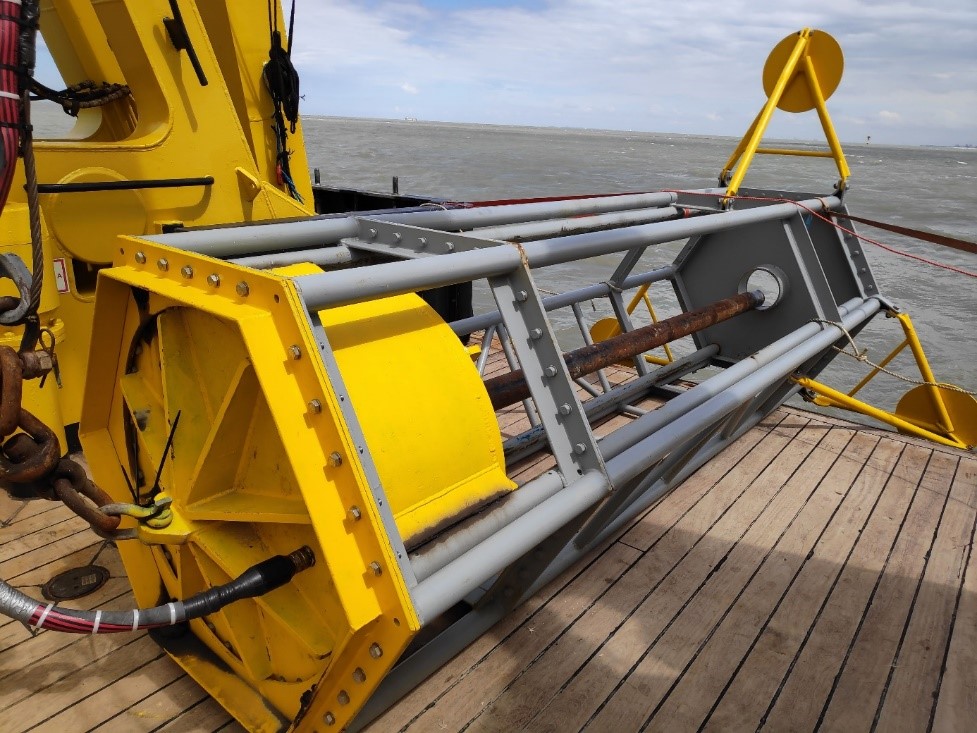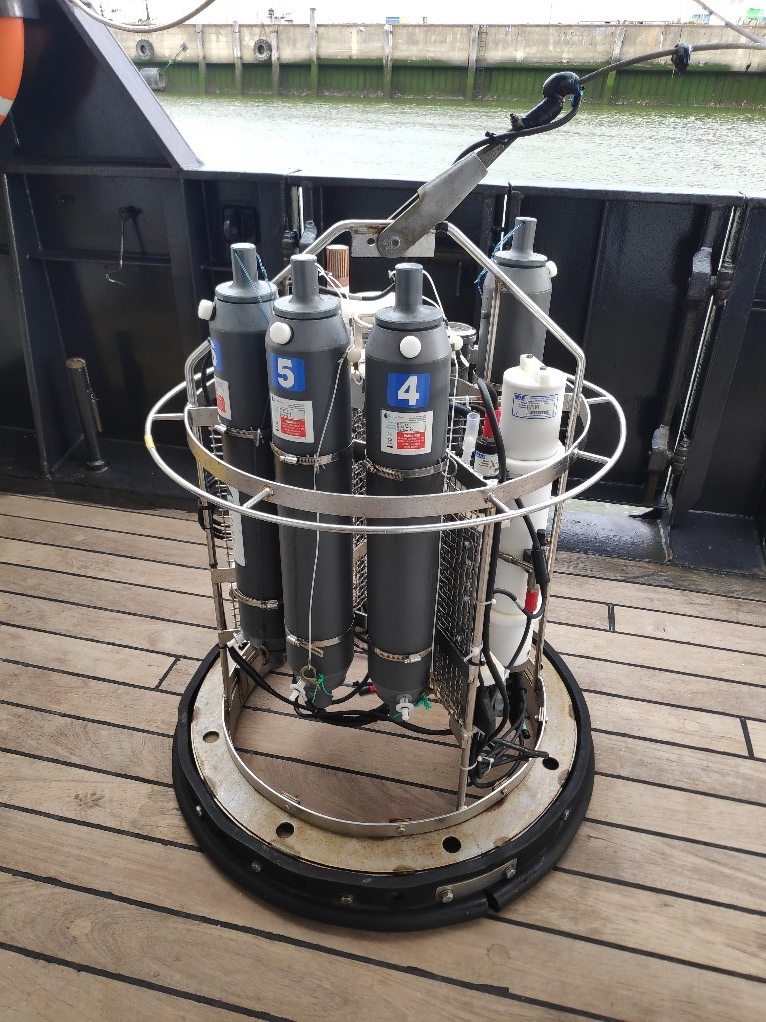Shallow gas research
Previous research has shown that the shallow subbottom sediments in the Paardenmarkt area contain a substantial amount of gas, either adsorbed onto sediment particles, dissolved in pore water or as bubbles in pore space. This phenomenon is not exceptional, and can be observed in many shallow seas throughout the world. The source of the gas is believed to be biogenic and a result of bacterial degradation of organic matter. The composition, concentration and fluxes of the gas, and its variability with depositional depth, however, have barely been studied and are poorly understood. Potential interactions between gas and buried munition shells may significantly influence corrosion velocity and the eventual release and spread of toxins into the environment. Hence, it is of great importance to conduct a thorough study of shallow gas in the Paardenmarkt area -in the sediment and water column- to better understand its entailments.
To do so, we have been (and will be) collecting sediment cores and water samples during multiple surveys aboard the RV Simon Stevin. Sediment cores are collected in the immediate surroundings of the dumpsite using a vibrocoring device operated from the aft deck of the research vessel (Pictures 1 & 2). Sub-samples for gas analysis are immediately extracted with syringes in an on-board lab in order to minimize loss of gas (Picture 3). Water samples are acquired both within the dumpsite area and in the immediate surroundings, using a Niskin bottle rosette (Picture 4). We mainly focus on the analysis of methane, CO2 and H2S gas, for which an analytical technique, called gas chromatography - mass spectrometry is used. Gas concentrations will be tracked over the time span of different seasons, allowing us to potentially spot seasonal variations, as production and release of natural gas may be influenced by temperature.



